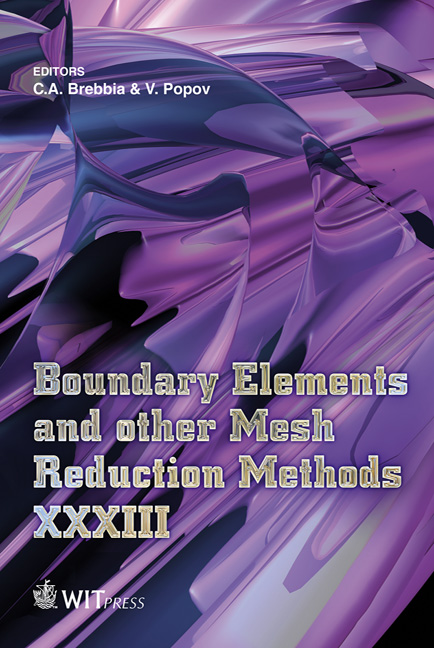URANS And LES Methodology For Two-dimensional Natural Convection In A Differentially Heated Cavity By BEM
Price
Free (open access)
Transaction
Volume
52
Pages
12
Page Range
99 - 110
Published
2011
Size
2,087 kb
Paper DOI
10.2495/BE110091
Copyright
WIT Press
Author(s)
L. ˇSkerget & J. Ravnik
Abstract
The paper considers the fundamental aspects of turbulence modelling for incompressible Boussinesq fluid flow and corresponding numerical models based on the boundary-domain integral equations. Two different solution methodologies of turbulent flow circumstances are considered, e.g. the classical statistical methodology known as Unsteady Reynolds-Averaged Navier–Stokes (URANS) equations and deterministic Large-Eddy-Simulation (LES) formulation. The velocity-vorticity formulation of the mean/filtered equations is applied, while the averaged/filtered pressure field is determined by solving the Poisson velocity equation. Chaotic natural convection in a differentially heated cavity of aspect ratio 4 with adiabatic horizontal walls is studied by both mentioned methodologies of the unsteady two-dimensional governing equations. Keywords: turbulence, large eddy simulation, unsteady RANS, boundary element method. 1 Introduction The set of partial differential equations governing the motion of viscous fluid is known as nonlinear Navier–Stokes equations. This equation system is generally considered to be the fundamental description for all laminar as well as turbulent flows, although some statistical averaging or deterministic filtering procedure is required in practice to predict the turbulence and simulate numerically the flow at higher Reynolds or Rayleigh number values due to the enormous computational effort needed. In the LES methodology the classical Smagorinsky model with Van Driest damping closed to cavity walls is considered, while in the URANS
Keywords
turbulence, large eddy simulation, unsteady RANS, boundary element method





